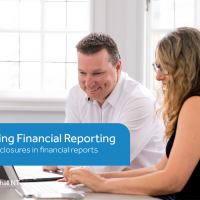Beware of dividend washing
The ATO has warned taxpayers not to engage in dividend washing transactions where attempts are made to claim franking credits twice. A typical example of a dividend washing transaction is where:
- A taxpayer sells shares ex dividend (i.e. shares are sold after the dividend is declared with the seller being entitled to the dividend and the buyer not so entitled); and
- The same seller later buys back similar shares cum dividend (i.e. shares are bought that will entitle the same seller – although now in the guise of a buyer – to receive a dividend for a second time).
Persons seeking to claim franking credits twice (i.e. firstly as the seller and secondly as the buyer) need to be aware of specific anti-tax avoidance rules in the income tax law that will prevent the taxpayer from claiming any franking credits attached to the second distribution.
Transition Issues: The Single Touch Payroll System
The streamlined STP reporting system – which will apply from 1 July 2018 to employers with 20 or more employees at 1 April 2018 – will report payments such as salaries and wages, allowances, deductions, other payments, pay as you go (PAYG) withholding and superannuation information directly to the ATO at the same time the employer pays employees.
The STP reported information will then be used to pre-fill business activity statements – obviating the need for employers to provide the following reports in respect of STP reported information:
- payment summaries to individuals; and
- payment summary annual reports to the ATO.
Because information not reported or captured in the STP system will still need to be reported on payment summaries, we would recommend that employers report as much allowable information as possible through the STP system.
Please speak to your Nexia Edwards Marshall NT Adviser to find out what information can be reported through STP and what information is excluded from STP reporting.
Electronic data matching: the advent of ATO e-audits
In today’s electronic environment, the ATO can use computer assisted verification techniques to analyse records – especially when dealing with typical compliance “tick the box” number checking. The ATO can interrogate a taxpayer’s computer accounting system so great care must be taken when inputting data to that system; income and tax deductions must be correctly categorised and coded.
Verifying the correctness of tax consulting advice (i.e. deciding whether an interpretation of the tax or superannuation law is correct or not) cannot be effected through ATO e-audits because the giving of tax or superannuation law advice requires a detailed consideration of the taxpayer’s circumstances and then applying the laws to those circumstances; this is not a “one size fits all” pre-fabricated checkbox process.
At Nexia Edwards Marshall NT we pride ourselves in understanding our clients’ circumstances and in giving tailored advice – we do not regurgitate out of the box-pre-fabricated solutions – after all, advice relevant to one client may not be applicable to another client’s individual circumstances.
How can Nexia Edwards Marshall NT help you?
For any questions or to discuss any of the above in relation to your personal situation, please contact Sarah McEachern or your Nexia Edwards Marshall NT Adviser.


